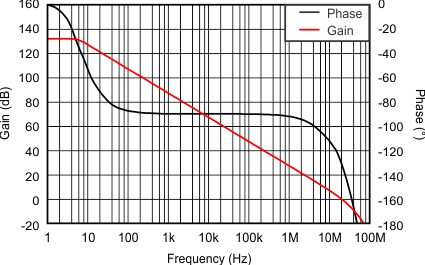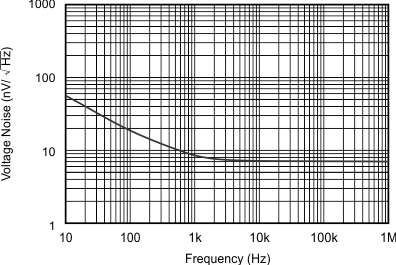ZHCSCS6B September 2014 – December 2018 OPA2320-Q1 , OPA320-Q1
PRODUCTION DATA.
8.2.1.3 Application Curves
Wide gain bandwidth as shown in Figure 38 and low input voltage noise as shown in Figure 39 make the OPAx320-Q1 device an excellent wideband photodiode transimpedance amplifier.

| VS = ±2.5 V, C(L) = 50 pF |

| VS = 1.8 to 5.5 V |